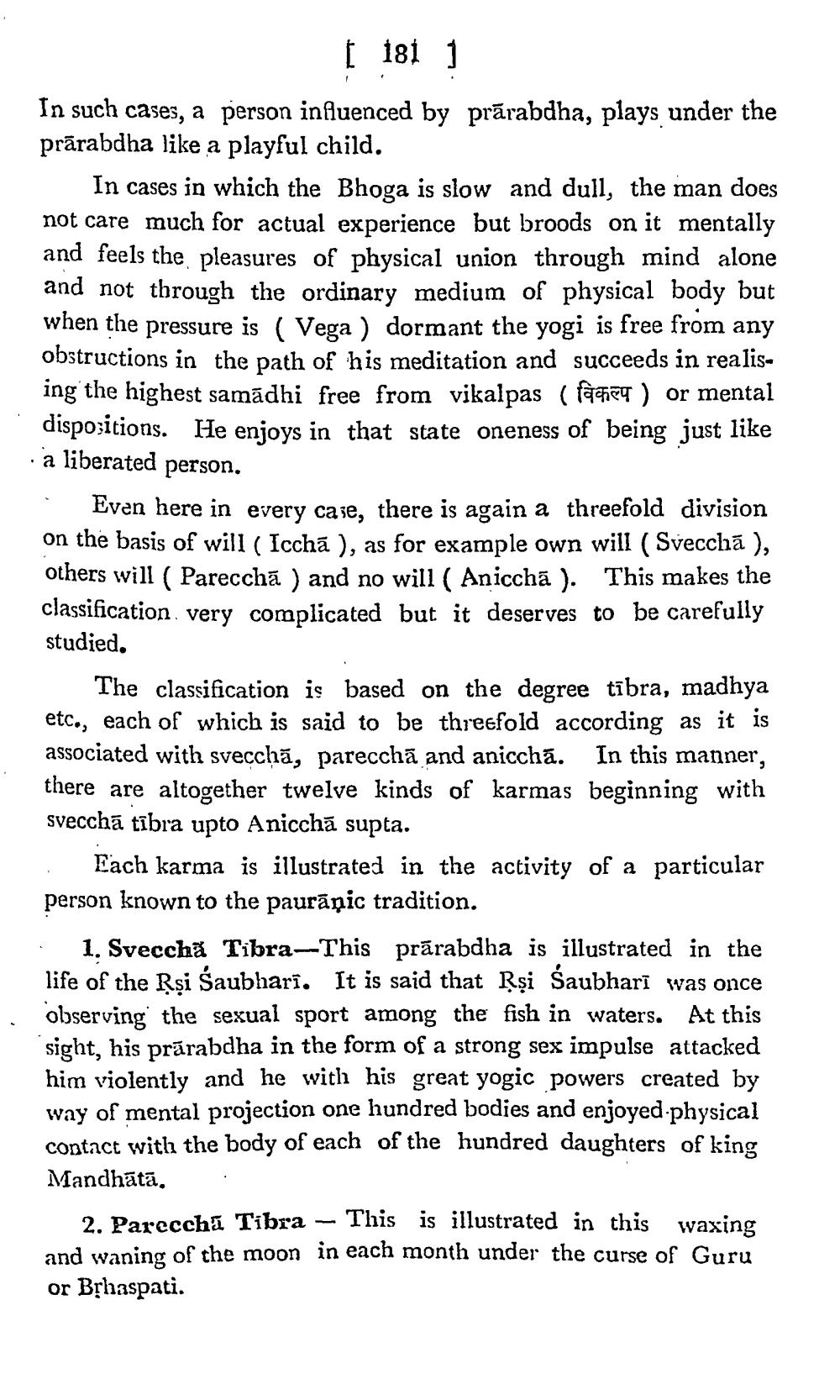________________
[ 181 1
In such cases, a person influenced by prārabdha, plays under the prārabdha like a playful child.
In cases in which the Bhoga is slow and dull, the man does not care much for actual experience but broods on it mentally and feels the pleasures of physical union through mind alone and not through the ordinary medium of physical body but when the pressure is (Vega) dormant the yogi is free from any obstructions in the path of his meditation and succeeds in realising the highest samadhi free from vikalpas (lasien ) or mental dispositions. He enjoys in that state oneness of being just like a liberated person.
Even here in every case, there is again a threefold division on the basis of will ( Iccha ), as for example own will (Svecchā ), others will ( Parecchá ) and no will ( Anicchā). This makes the classification. very complicated but it deserves to be carefully studied.
The classification is based on the degree tībra, madhya etc., each of which is said to be threefold according as it is associated with svecchā, parecchā and aniccha. In this manner, there are altogether twelve kinds of karmas beginning with svecchā tībra upto Anicchā supta.
Each karma is illustrated in the activity of a particular person known to the paurāņic tradition. : 1. Svecchă Tibra-This prārabdha is illustrated in the life of the Rși Saubhari. It is said that Rşi Saubharī was once observing the sexual sport among the fish in waters. At this sight, his prārabdha in the form of a strong sex impulse attacked him violently and he with his great yogic powers created by way of mental projection one hundred bodies and enjoyed.physical contact with the body of each of the hundred daughters of king Mandhātā.
2 Pareccha Tibra - This is illustrated in this waxing and waning of the moon in each month under the curse of Guru or Bphaspati.




